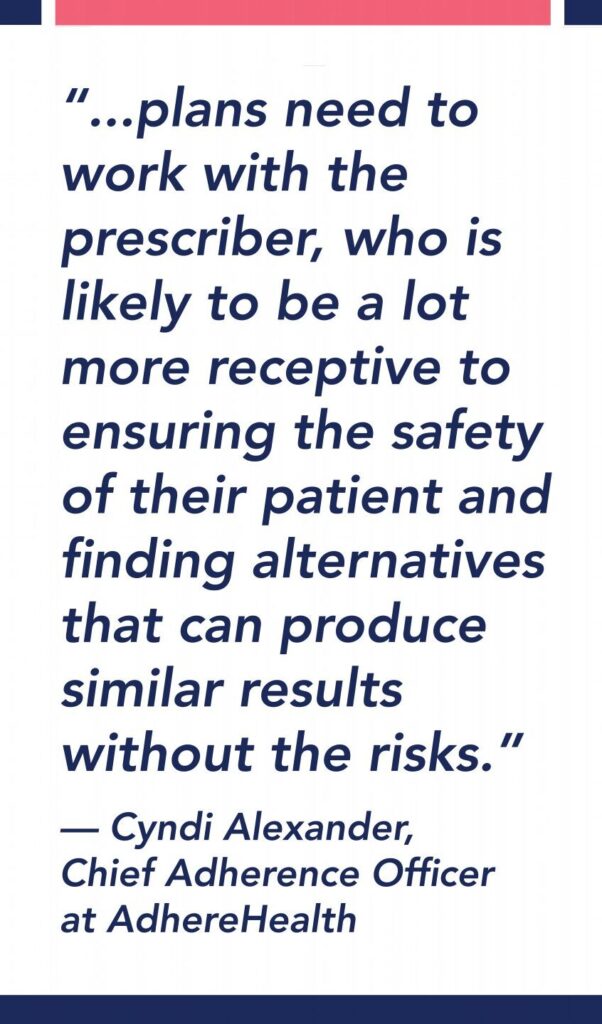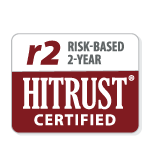Published on .
The Centers for Medicare and Medicaid Services (CMS) demand that Medicare Advantage plans remain continuously effective through the provision of valuable care to enrolled beneficiaries. As a result, each year CMS adjusts its Star Ratings requirements as an ongoing measure of successful plan performance in its Proposed Changes and the subsequent Final Rule.
Improvements to medication management for elderly and complex members features heavily among the expected 2024 changes, as CMS tries to reduce medication errors and patient safety events that often lead to avoidable hospitalizations and poor outcomes for people in fragile health.
To that end, three new Part D measures are slated to join the 2026 Star Ratings cycle (2024 measurement year), including categories for potentially dangerous medications such as opioids, benzodiazepines, anticholinergics, and central nervous system active pharmaceuticals. These measures continue as “proposed” and CMS has noted they are to be “addressed in a later final rule.”
The new Part D measures hearken back to the previous Use of High-Risk Medication in the Elderly (HRM) measure, which gauged the percentage of individuals over 65 who received two or more prescription claims for a high-risk medication during the measurement year.
Many of the same strategies that applied to the previous HRM measure for high performance apply to these Part D medications. However, the new measure set offers more detailed insights and guidance into specific combinations of medications known to be riskier for polypharmacy members.

“These are important areas of focus for the Medicare Part D population,” CMS had noted. “We anticipate that the COB, Poly-ACH, and Poly-CNS measures will continue to help plans identify enrollees who are at risk of respiratory depression or fatal overdoses, cognitive decline, or falls and fractures, respectively, and facilitate plans to encourage appropriate prescribing when clinically necessary.”
Performing well on these polypharmacy measures will be critical for plans that hope to unlock quality bonus payment (QBP) incentives by earning 4 or more Stars overall. Medication adherence and safety measures are hugely influential on a health plan’s outcomes, and it is crucial for MA leaders to understand how to leverage medication safety to produce a positive impact on performance.
Here’s what MA plans need to know about the new Part D measures and how to best work with prescribers and members to improve safety and performance.
What are the expected changes to the Star Ratings?
CMS will move three measures from the display page into the Star Ratings proper for Performance Year 2024. All the measures are tied to reducing the risks of negative drug interactions or side effects among members:
- Concurrent Use of Opioids and Benzodiazepines (COB): The percentage of individuals ≥18 years of age with concurrent use of prescription opioids and benzodiazepines.
- Polypharmacy Use of Multiple Anticholinergic Medications in Older Adults (Poly-ACH): The percentage of individuals ≥65 years of age older adults with concurrent use of two or more unique anticholinergic medications.
- Polypharmacy Use of Multiple Central Nervous System Active Medications in Older Adults (Poly-CNS): The percentage of individuals ≥65 years of age with concurrent use of three or more unique central-nervous system (CNS)-active medications.
In these measures, “concurrent” is defined as an overlapping days supply of greater than or equal to 30 cumulative days. CMS has noted in the proposed rule that plans performed acceptably during the display period, but there is still room for improvement.
The new trio are similar in purpose to the retired HRM measure, which focused on a list of specific drugs that were “associated with increased risk of harm from drug side effects and toxicity, and pose a concern for patient safety [especially in the elderly]. Studies link prescription drug use by the elderly with adverse drug events that contribute to hospitalization, increased length of hospital stay, increased duration of illness, nursing home placement, and falls and fractures that are further associated with physical, functional and social decline in the elderly” per CMS. The difference in the three new proposed measures are the specific drug classes in question.
Why are the new Part D measures important for MA Plans?
Paying close attention to specific medication classes makes a big difference in the health and safety of the elderly. Some medications that are generally safe to double up in younger, healthier populations may not be appropriate in the 65+ year age group, explained Levi Sanderson, Pharm. D., Clinical Solution Specialist at AdhereHealth.
“For example, an elderly person taking Benadryl, which is an anticholinergic medication, has very different risks than a healthy 40-year-old taking the same over-the-counter drug,” he said. “In some people, it can cause drowsiness or dizziness. In an elderly individual, additional side effects like confusion and disorientation can occur, which dramatically increase the likelihood of a fall that leads to a broken hip, which can be devastating for an older person’s health.”
Continued Sanderson, “If their PCP recommends Tylenol PM for insomnia, and their urologist gives them oxybutynin for incontinence, those alarm bells need to go off for that individual. These measures are designed to focus on the enhanced risks among older populations, especially since medications with anticholinergic activity fall into many different classes of medications, and it’s difficult to keep track of all the potential risks without specific monitoring through measures like these.”
How to prepare for managing polypharmacy risks in members
“Health plans need to use sensitivity when approaching the management of members using these medications, since the majority are for the treatment of pain and mental health conditions,” cautioned Cyndi Alexander, Chief Adherence Officer at AdhereHealth.
 “It’s difficult to manage these measures directly with a member, because they won’t always understand why you’re calling to change something their doctor prescribed for them, especially if they feel it’s helping with their chronic pain or their mental health,” she said. “They’re just going to hang up, and plans are going to lose the trust they need to work with that member around a whole variety of Stars measures that impact overall performance and incentives. Instead, plans need to work with the prescriber, who is likely to be a lot more receptive to ensuring the safety of their patient and finding alternatives that can produce similar results without the risks.” A provider-first communication and follow-up approach, similar to addressing the statin use measures SUPD and SPC, works best to drive meaningful and lasting therapy and behavior change for members prescribed medications that could put them at increased risk.
“It’s difficult to manage these measures directly with a member, because they won’t always understand why you’re calling to change something their doctor prescribed for them, especially if they feel it’s helping with their chronic pain or their mental health,” she said. “They’re just going to hang up, and plans are going to lose the trust they need to work with that member around a whole variety of Stars measures that impact overall performance and incentives. Instead, plans need to work with the prescriber, who is likely to be a lot more receptive to ensuring the safety of their patient and finding alternatives that can produce similar results without the risks.” A provider-first communication and follow-up approach, similar to addressing the statin use measures SUPD and SPC, works best to drive meaningful and lasting therapy and behavior change for members prescribed medications that could put them at increased risk.
Plans should start the process to support the new Part D measures early in 2024 by implementing year-round monitoring of prescription claims. Prescriptions for high-risk medications can happen at any point in the calendar year, as can healthcare events that may require high-risk medications, so plans need to be constantly vigilant and treat these measures as continually in progress.
“This isn’t going to be a one-and-done activity,” said Alexander. “Because these measures get triggered when members receive a second or third prescription in a specific category, every person that starts the year on one of these drugs is at risk of ‘tripping into the measure’ within a given performance period. That’s going to be a lot of members, and they are constantly going to be going on and off these medications.”
Consequently—comprehensive, ongoing and accurate monitoring with near–real time analytics are critical for plans to keep track of the right members and to reach providers at the right time before the risks pile up.
Ongoing surveillance of member claims and SDOH data must happen in concert with outreach workflows focused on informing and driving provider-led intervention. In this way, plans are able to shift at-risk members to alternate medications and ensure they’re meeting measure requirements when polypharmacy concerns in these Part D medications are identified. This may involve building an in-house team or leveraging a partner, like AdhereHealth, that specializes in data-driven longitudinal adherence solutions with omnichannel provider communication capabilities. This approach helps plans streamline medication management activities and foster trusted, year-round relationships with members and their provider networks to drive maximum impact.
“These measures, alongside the other proposed measures around medication adherence and care coordination, are going to produce significant challenges for health plans that don’t have strong pharmacy infrastructure in place,” said Alexander. “A lot of plans just aren’t familiar with how to hit these goals, so it’s important that they work with partners who have the experience and the resources to make it happen quickly and effectively.”
She continued, “Believe it or not, 2024 is just around the corner, and now is the time to start preparing for these big Star Ratings changes. Plans can’t afford to be left out of the QBP pool or the other benefits that come with 4 or more Stars, so creating and deploying a plan now will be essential for taking advantage of those opportunities.”
To learn more about how AdhereHealth can help Medicare Advantage plans like yours prepare to address CMS expected changes and maximize Star Ratings performance, request a consultation today.
